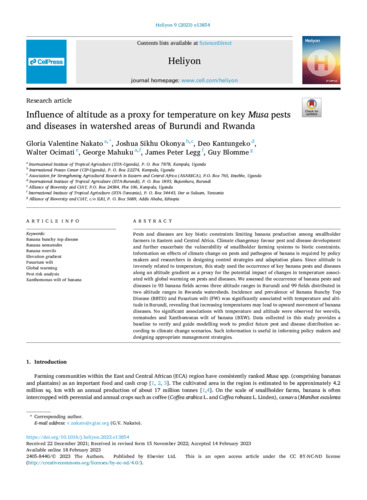Influence of altitude as a proxy for temperature on key Musa pests and diseases in watershed areas of Burundi and Rwanda
Pests and diseases are key biotic constraints limiting banana production among smallholder farmers in Eastern and Central Africa. Climate changemay favour pest and disease development and further exacerbate the vulnerability of smallholder farming systems to biotic constraints. Information on effects of climate change on pests and pathogens of banana is required by policy makers and researchers in designing control strategies and adaptation plans. Since altitude is inversely related to temperature, this study used the occurrence of key banana pests and diseases along an altitude gradient as a proxy for the potential impact of changes in temperature associated with global warming on pests and diseases. We assessed the occurrence of banana pests and diseases in 93 banana fields across three altitude ranges in Burundi and 99 fields distributed in two altitude ranges in Rwanda watersheds. Incidence and prevalence of Banana Bunchy Top Disease (BBTD) and Fusarium wilt (FW) was significantly associated with temperature and altitude in Burundi, revealing that increasing temperatures may lead to upward movement of banana diseases. No significant associations with temperature and altitude were observed for weevils, nematodes and Xanthomonas wilt of banana (BXW). Data collected in this study provides a baseline to verify and guide modelling work to predict future pest and disease distribution according to climate change scenarios. Such information is useful in informing policy makers and designing appropriate management strategies.

